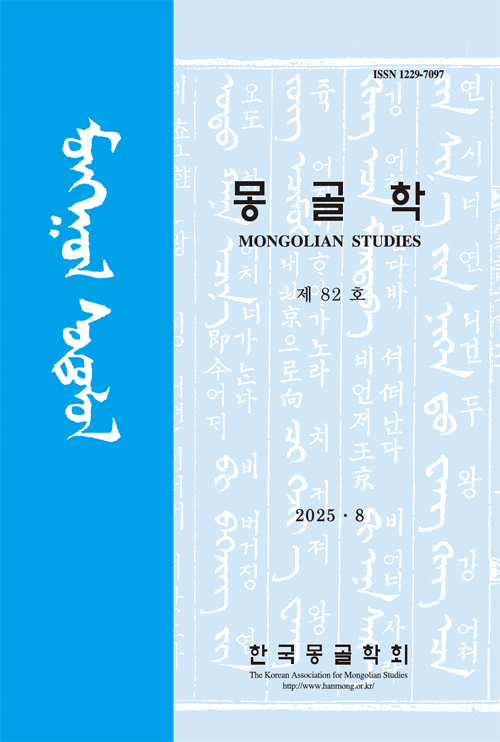Mongolian shamanism was transmitted mostly among nomadic people in the Mongolian steppe, and thus it reflects various nomadic cultural traditions. These are well presented in the Secret History of the Mongols which is believed to be written in the 13th century. In addition, Mongolian shamanism makes a crucial substance for Mongolian folktales, folk paintings and modern literature like novels. In this respect, I intend to research magic inside Mongolian shamanism. Mongolian shamanism is very unique. Traditionally shamans are divided into two main categories by symbolic colors, namely white shamans and black shamans. This division is closely connected to the anthropological differentiation of magic as white magic and black magic. In particular, in the case of black magic, Mongolian shamanism uniquely contains sorcery and witchcraft. In dealing with Mongolian shamanism the boundary of white magic and black magic is sometimes not clear. For instance, traditionally both white shamans and black shamans performed shamanic rituals to cure ill patients. But after the influence of Buddhism in the late 16th century in Mongolia mostly white shamans (also later on called yellow shamans) take part in this kind of shamanic ritual. Hence, my research focuses on rituals for magic as well as terms for magic in order to scrutinize all elements of magic inside Mongolian shamanism. In particular, I outlined various kinds of magic reflected inside Mongolian shamanism and also structurized magic according to anthropological frameworks. In addition a magical term in Mongolian shamanism ‘id shid’ is used for sorcery as well as witchcraft depending on the shaman’s intentions found in Mongolian folktales. Also I analyzed terms of magic in detail to investigate inherent meanings of magic inside Mongolian shamanism.
1. 서론
2. 몽골 샤머니즘에 내재된 주술과 주술의 특징
3. 몽골 샤머니즘에 반영된 주술의 유형
4. 몽골 샤머니즘에 내재된 주술과 주술 관련 용어 및 언어표현
5. 결론
참고문헌
(0)
(0)
